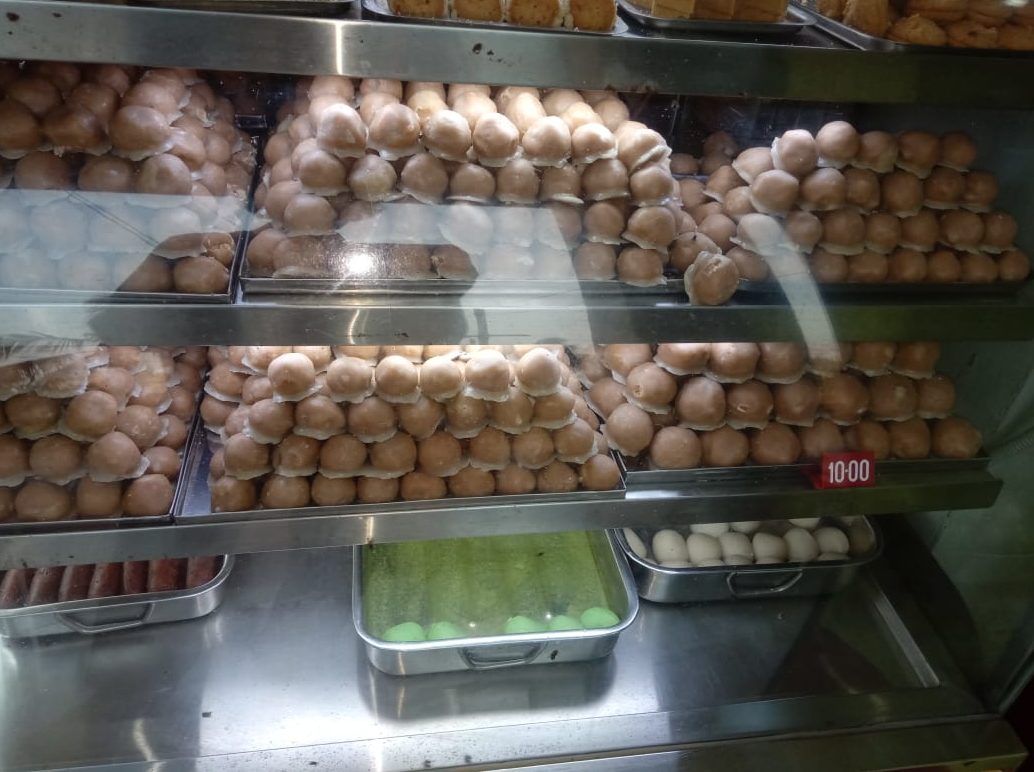West Bengal has such a wide variety of sweets (mishti) that almost every district specialises in one or more type that artisans in other districts may not be able to prepare.
The most popular Bengali sweet is certainly the sandesh, and while it is found all over Bengal, something sets it apart from most sweets elsewhere in the country. And that is the main ingredient – milk, turned into chhana (cottage cheese), and mixed with sugar.
The most common ingredients for sweets in other parts of India are gram flour (besan) and clarified butter (ghee).
But in this part of the dry south Bengal region – Bankura’s Beliatore – the most popular sweet is the mecha sandesh, made from gram flour and ghee. There is no chhana in this Bengali sweet. Now, the local sandesh makers’ associations are demanding a Geographical Indication (GI) tag for mecha sandesh.
How this mishti was born
The area in and around Birbhum and Bankura districts of Bengal was known as the Mallabhum. The Rajas of Bishnupur were known as the Malla kings – who ruled from 7th century AD till the beginning of the British rule in India – and had roots in the Bagdi community of Bishnupur.
The Malla kings were great patrons of architecture, Hindustani classical music and literature, and under their rule, scores of terracotta temples were set up throughout Bishnupur. They were also patrons of a Vrindavani form of Vaishnavism.
The renowned painter Jamini Roy (1887-1972) hailed from Bankura district’s Beliatore, 40 km from Bishnupur. Roy was born into a family of landowners in Beliatore – generations ago they were a family of dewans of the Malla kings, and had got the Beliatore land as a gift from a Malla king, Jamini Roy’s grandson, Soumya Kanti Roy said.
It is in Beliatore that the mecha sandesh was first prepared, and sweet makers have been preparing it for generations now, and it has remained restricted to this region alone. The story goes that this dry part of southern Bengal had dearth of milk, but there was no way either the people or their kings could do without sweets. Following a demand for sweets from the Malla kings and the people, the mecha sandesh was prepared between 1625-35, and became hugely popular.
Hand pound planks – the dhneki – were present in most homes and used for pounding rice. These very planks were also used to pound gram into gram flour. The gram flour was fried in ghee and made into thick lumps. The hard lumps were pounded again, turned into fine grainy consistency, and poured into hot sugar syrup and mixed with khowa kheer (unsweetened milk boiled and reduced to soft, brownish grainy solid). The khowa kheer can be preserved and possibly used to be brought from elsewhere. Once this was taken out and cooled down a bit, the warm and soft fried gram flour was made into small round balls, and again dipped into sugar syrup for a thin sugary coating.
Thus was born the mecha sandesh, which continues to be made in the same manner for centuries.
Demand for GI tag
According to shopkeepers, the recipe is replicated by big brands of confectioners including some in Kolkata, but they cannot bring the taste of the original mecha sandesh. Therefore they have applied for a GI tag in March.
Haridas Dey, one of the sweet-makers, says that about 15 families are involved in the making of the mecha sandesh. “If roshogolla can get a GI tag, why not mecha sandesh? People must know the rich history associated with this sweet!”
Soumya Kanti Roy, who lives in Beliatore, says that it was a favourite of Jamini Roy and those who either hail from the region or live there will swear by its taste and know that other artisans from other parts of the state cannot make the same kind of mecha sandesh. And therefore, not only is the GI tag essential to retain the original taste of the sweet, it is also important that people know about the unique history of this sweet.

